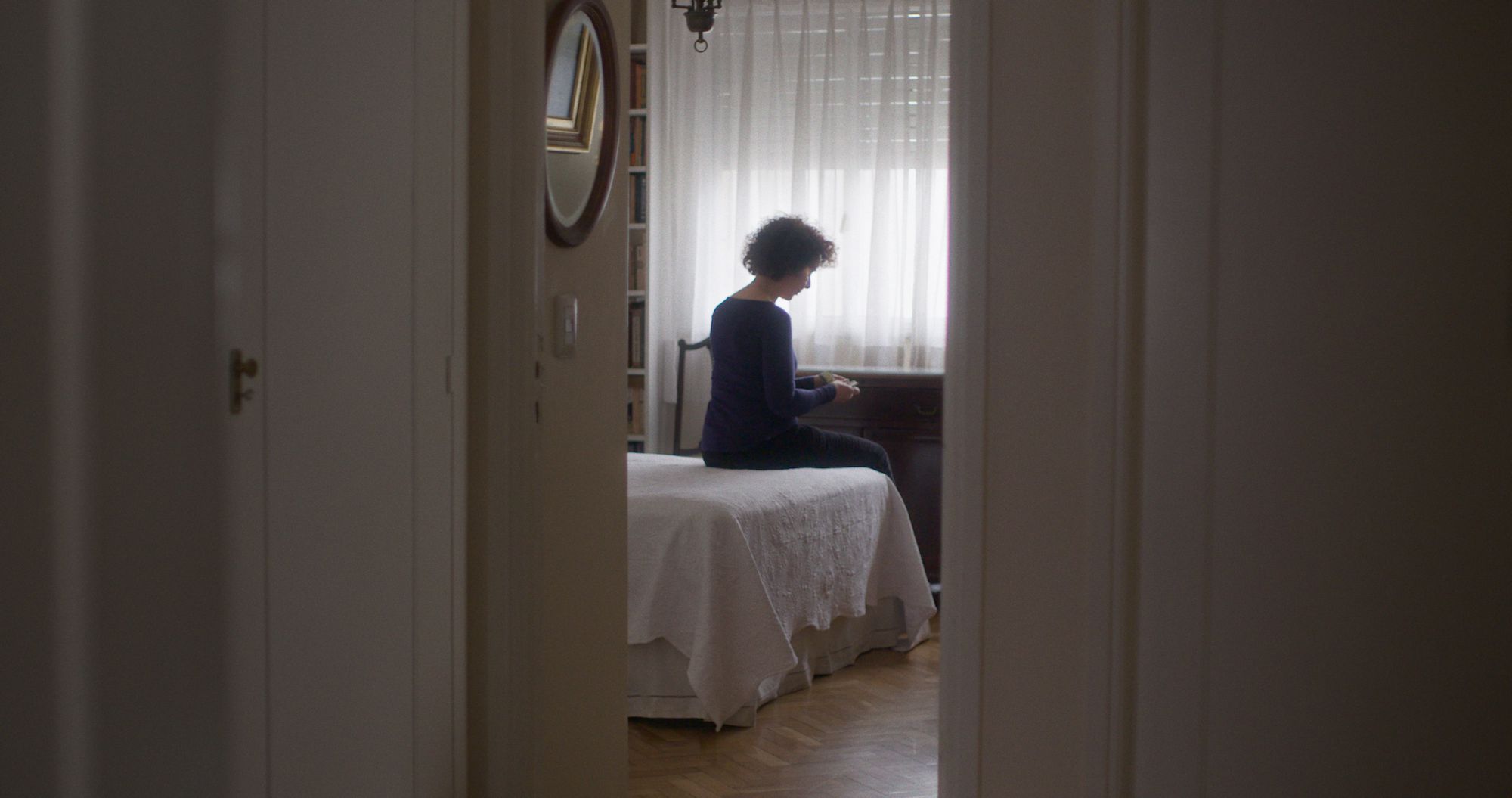
An Odd Turn (Un movimiento extraño) thrums with a sense of classicism and mystery, yet feels plugged into the uncertainties of Argentina’s current reality: haunted by a failure to confront the violent past, high inflation rates and a devaluation of the peso. Concerning the travails of a security guard with a sixth sense whose romantic encounters are linked to her gamble on the currency market, Francisco Lezama’s film eschews conventional narrative plotting in favour of creating a peculiar yet beguiling vibe; born out of his unorthodox way of writing narratives through collecting contrasting ideas on cards, all the while working as a film history professor at Universidad del Cine and at the Museum of Moving Image Film Archive in Buenos Aires. After his Golden Bear win at this year’s Berlinale, we talked to Lezama about the twin inspirations of Balzac and Rohmer, creating a humanist working method and cinema as a response to the current woes of contemporary Argentinean life.
What struck me about this film is its focus on work, money, and romance, and how those things can interweave. What drew you to make a film about the fluctuations of the currency market and how it links to interpersonal relationships?
The plot and the structure are never clear to me in advance. That’s because I follow a particular writing method. This consists of accumulating digressive ideas over months and months. I write down everything on small cards and once I’ve written a good number of cards/ideas (dialogues, editing ideas, academic quotes, silly jokes, etc.), I then move on to selecting those ‘winning cards’ (about twenty or so).
The writing process from there on becomes challenging: How do I make sure none of these cards are discarded? From then on, I know that the film will be the result of juggling all of these ideas without anything falling to the ground. This method brings me much closer to reality. After the silent film era, the classic-Aristotelian-three-act-hero-journey has been imposed in narrative fiction. This kind of narrative always felt unreal and apolitical for me. Writers are forced to separate characters from their background, to create challenges for them, to move them like puppets, etc., etc., etc. This ‘save the cat’ rhetoric didn’t work for me at all so I decided to watch primitive silent cinema in order to get inspired.
From a systematic reading of Balzac, my obsession with money and failure emerged.
This film reminds me of tapestries and imagery from the Middle Ages. In these paintings, rather than a clear single path, you can find a kind of wooded landscape… a forest with many trees and many paths. I find in these references much more inspiration, more openness, more vital electricity than in classicism. In this wilder and woodlike form every disgressive idea seems to fit easily. Everything seems possible to unfold and enter the film — without prejudices regarding whether they would work or not. I believe this is closer than life. It’s something personal.
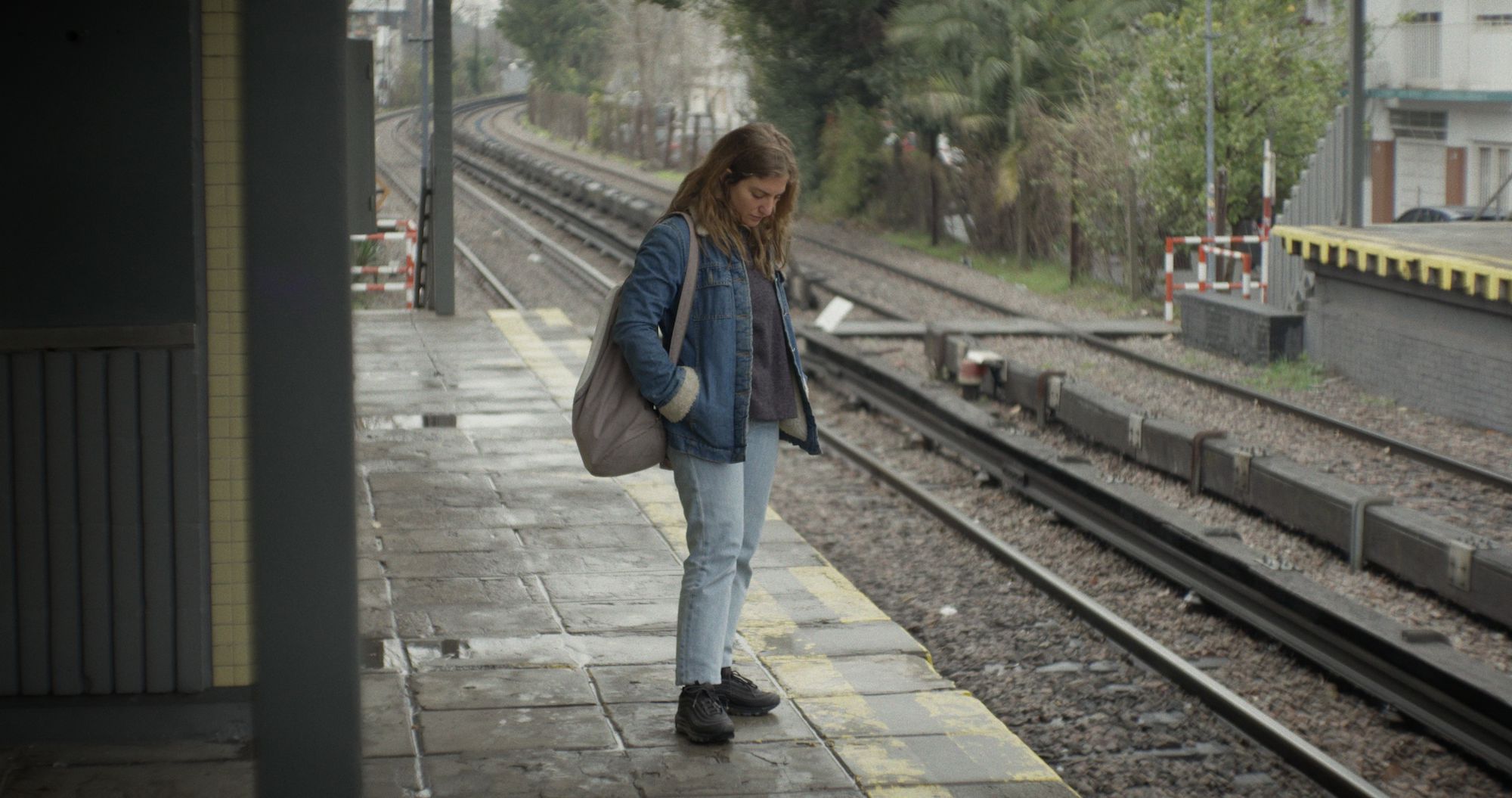
I read that many elements of this film are inspired by your personal life. I’d love for you to expand on that.
In my shorts there’s a weird mix of biographical and fantasised elements. All that I write has to do with failures because there’s a vital aspect of failing that moves me. Some years ago, while teaching at university, I started researching on the tastes and influences of the authors that I admire. Since then I started giving more importance to their tastes than to films or statements. That’s how I put together a research program: if Rohmer loved Balzac, I was going to read Balzac. From there, from a systematic reading of Balzac — there is no other approach to Balzac’s oeuvre — my obsession with money and failure emerged (Lost Illusions, Susan Sontag’s favorite novel, revolves exclusively around failure).
Reading Balzac’s constellation of novels about money and failures made me see all of Rohmer’s work from a Balzacian political perspective. In 2016 I wrote and directed Dear Renzo, a short about a young man who tries to apply for a film preservation M.A. at NYU and fails because, even with an 80% scholarship, he doesn’t have enough money to pay for it. That happened to me. I exaggerated it, I transmuted it and I used it as a narrative excuse to work with some of my cards and ideas.
The biographical in me is crossed by the bibliographical.
In the case of An Odd Turn, everything revolves around a security guard who becomes obsessed with an employee of a currency exchange house. The guard fantasises a love story that only progresses in her head. From there, unconsciously, An Odd Turn ended up approaching Eric Rohmer’s 1962 film La Boulangère de Monceau (The Bakery Girl of Monceau) in spirit. I admire Rohmer. I love the way Barbet Schroeder’s character invents and forces a supposedly spontaneous eye contact on the street with a young bourgeois woman identical to him. Rohmer’s tender cynicism about daily bourgeois conspiracies moves me as much as Balzac’s register of social behaviour. Returning to the question, I believe that the biographical in me is crossed by the bibliographical. What I read affected what I saw, and what I saw affected what I ended up filming with my small card-writing method.

I’m fascinated by the movie’s structure, which sums up the meaning of the title. How did you think about telling this story and moving from the tale of a security guard into something else entirely? Was the structure always obvious?
The structure appeared only at the end. As I work with cards/ideas, I start to feel that these ideas are marinating or soaking over time. They begin to have life, biographical life, my life. These ideas are never placed in the function of a specific narrative result (making a comedy, for example). The method I work with allows me the freedom to change what I want, whenever I want, and however I want, regarding the course of the characters.
On the other hand, my biggest literary influences are César Aira, Alberto Laiseca and Copi, three Argentine authors who inspire me to detect when I am stuck in ‘narrative traps’. I believe that in cinema, narration is only an excuse. If you buy what you are selling, you are lost. If you buy into the story you are selling as ‘important’ or ‘necessary’, you become solemn, old and dead. In narrative fiction, the story is not the main thing; fiction is made of atmospheres, gestures and movement.
The method I work with allows me the freedom to change what I want, whenever I want, and however I want.
Did you film in a particular museum? Was it challenging to get permission to shoot?
I shot at the museum where I worked for eight years. MALBA (Museum of Latin American Art of Buenos Aires) is a museum with a large cinema inside. I worked there for eight years, tearing movie tickets and helping elderly people who arrived late to the screenings to sit in the darkness. Once the museum doors closed, the cinema kept running. There, only the security guards and I remained in a state of lethargic complicity. It wasn’t difficult for me to film inside. I filmed a fiction about a security guard escorted by the same security guards who served as inspiration for me.

I’m interested in the works of art you focus on here — one about the Falklands War and a naked sculpture. Is there any reason you chose to highlight them?
The artworks are by Pablo Suárez, an Argentine artist who passed away in 2006. The exhibition I filmed was a retrospective. I was interested in the way Suárez combined the anti-naturalism of comics with gritty and raw realism (his works address the Argentinian economic crisis of the 80s and 90s). One of the cards/ideas related to his works was something like this: “A security guard illuminates Suárez’s erotic works with a flashlight… the works influence her behavior.”
This is a good example of what I consider ‘a card’: filming Pablo Suárez’s work at night and with flashlights. Those works by Suárez narrate in a transversal and symbolic way the power that the press had during the war. The piece about the Malvinas Islands (In Argentina, we never refer to the Malvinas as the Falklands) is a subtle critique of the shameful coverage that one of the country’s most important newspapers provided during the war. This newspaper lied to all the Argentinians and kept on lying to us for years.
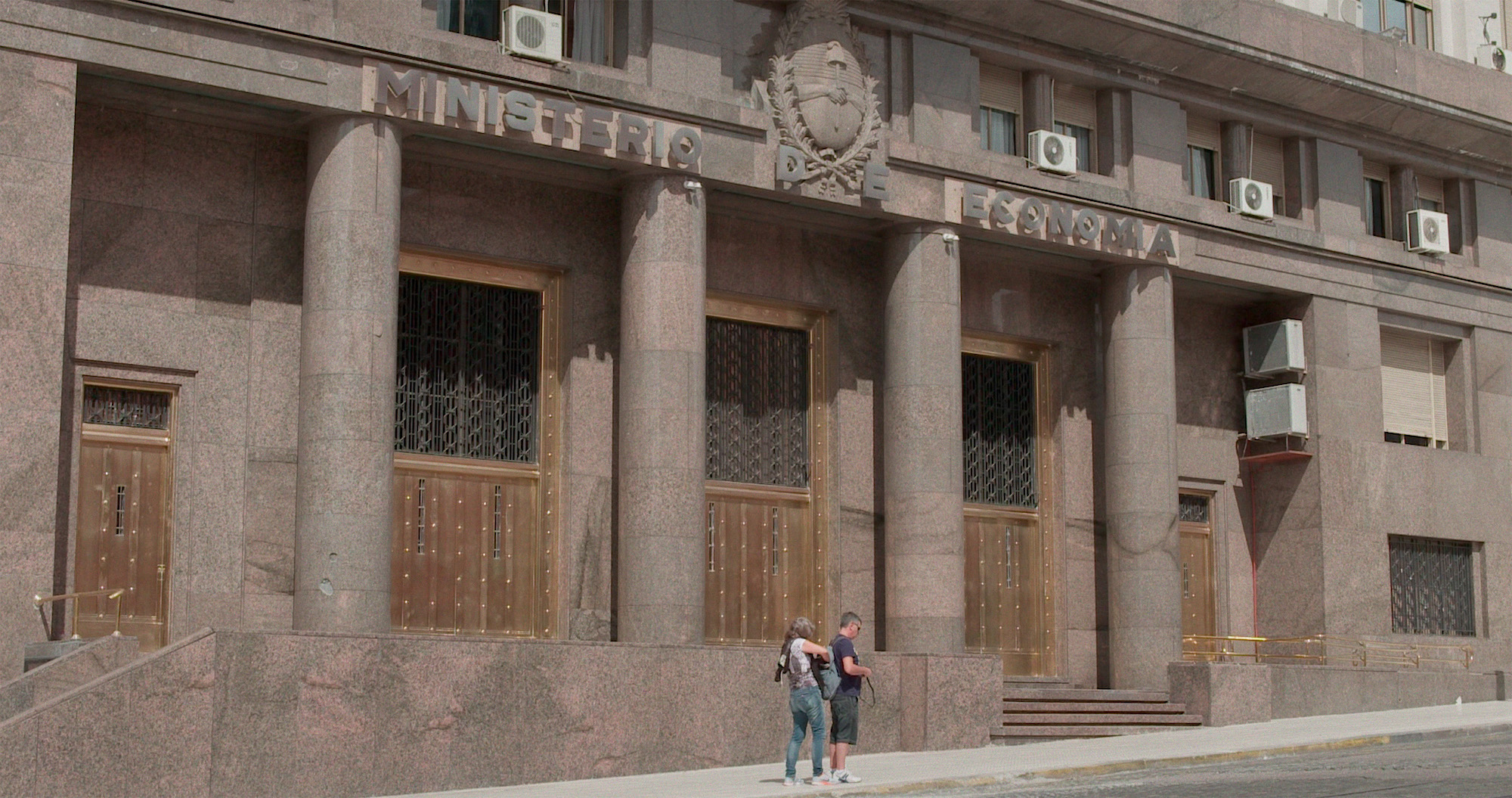
In two crucial scenes, you shoot in low light, but the action is always clear. What was the challenge involved with shooting in low light?
This is something that the Director of Photography Federico Lastra has been working on for years. We discussed it a lot. For him, filming in low light requires establishing an agreement with some conventions about what is visible. He prefers to think that low-key scenes are more powerful if they are hinted at rather than fully revealed. Night and darkness are not something that can be constructed linearly like a sunny day. If the photography work is careful, it’s not so much about illuminating as it is about subtracting what is necessary from the darkness.
Low-key scenes are more powerful if they are hinted at rather than fully revealed.
In the low-key scenes you mentioned, he used very soft and indirect lights with a lot of distance. In both scenes, we had to also depict two institutional spaces (the factory and the museum). In that sense, the protagonist somehow directs with her flashlight, like a small Prometheus, the meaning and progression of what is being told.
Everyone in the film acts rather naturally, with no extraneous gestures. Do you have a particular way of working with actors and what are you looking for in their performances, especially your regular collaborator Laila Maltz?
Thanks, that’s flattering. I believe that the main work I carry out is with the actors. While directing I seek that whatever we end up seeing on screen — the city or/and the performances — has to be entropic, chaotic and alive. This is something we can learn from the films of the Lumière brothers. Their films are very much alive and they transcend; they move us and hypnotise us without relying on any plot or any literary narrative system.
I believe that cinema can survive time as long as there is a wild creative state, resistant to conceptualisation. Many actors fail to bring life (many directors fail that too). They seem to act dead, buried under ideas of what is ‘good’. I believe in what is ‘new’, that is, in the unexpected for the actors themselves. I believe that the actor must surprise themselves; if they are in complete control of them, their performance dries up. I think the same applies to all the technical crew too.
Why do babies and animals never die on screen? Why do all children under six draw living works in kindergarten? I seek for my actors and my technical team to appeal to and express their unnormalised animal or kindergarten side of themselves. To surprise themselves while I am also surprised alongside them. That’s a kind of humanist working method.
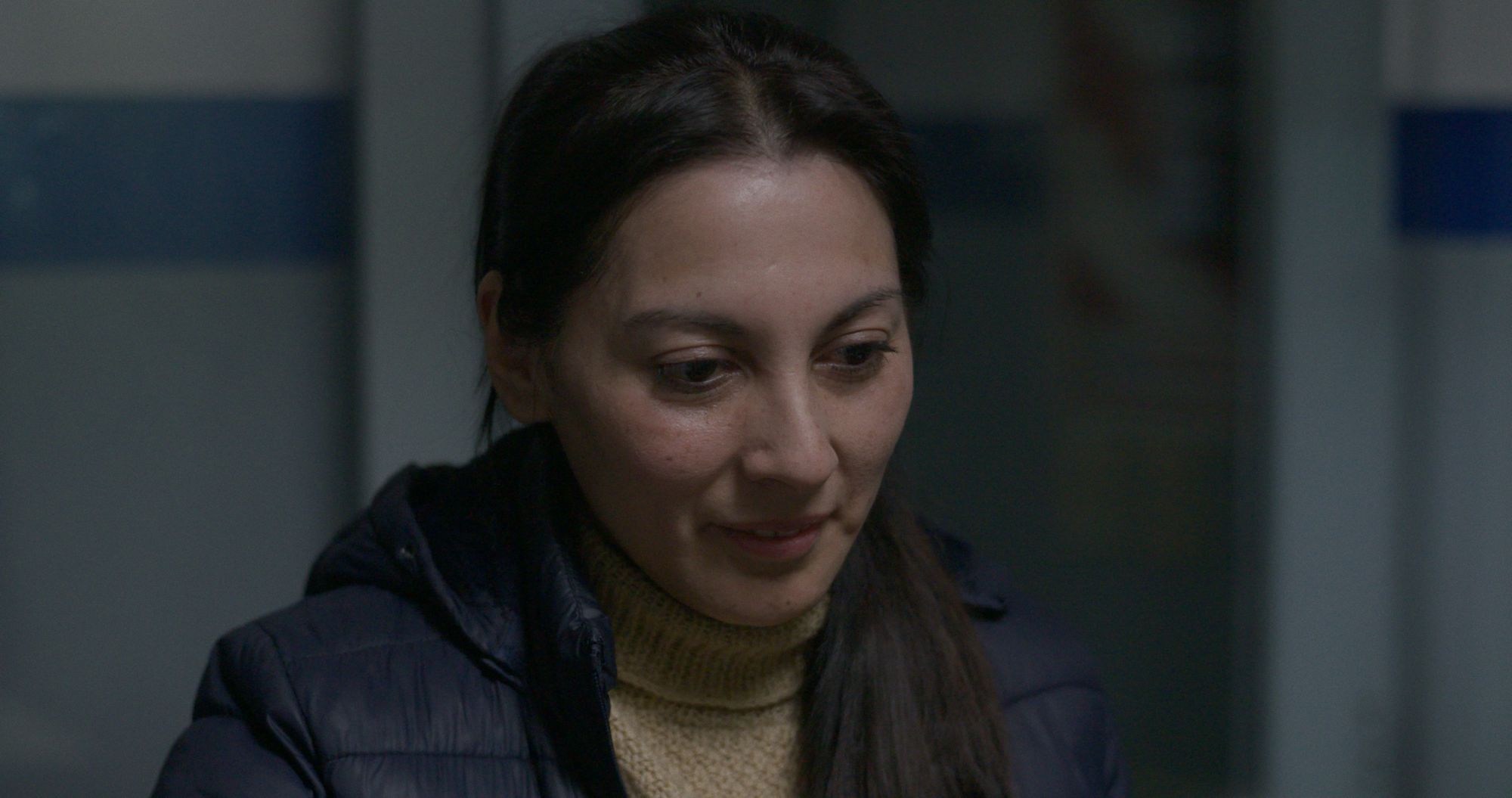
The film is set in 2019 when the US dollar rose significantly against the peso. The last few months alone, however, have seen an almost three-fold increase. With the new president Javier Milei saying Argentina should simply adopt the US currency, do you think this could be a reality? And is it a good idea? I presume not…
The current president of Argentina won the elections surprisingly. In Argentina, there are usually two political parties that compete for power election after election. After the pandemic, something seems to have broken in Argentina. I believe there was an over-digitisation of the human experience, leading Javier Milei to win the elections with TikTok on his side.
One of his campaign promises was the dollarisation of the economy. The neglect of the Argentine currency (the peso) for the US dollar. The fanciful conversion of salaries from pesos to dollars appealed to low and lower middle classes who work ‘independently’ with applications. Milei’s triumph is the result of the advance of frictionless capitalism: of hyper-digitised capitalism, of app culture. The false sense of entrepreneurship that these apps confer on their exploited workers has helped spread the idea that “if I have an app that protects me, the State is no longer necessary.” The situation in Argentina is worrying, and I do not doubt that this will happen soon in other countries.
I watched much more Argentine cinema than American cinema.
Many of the themes reminded me of Los Delincuentes (The Delinquents), which was my favourite film of last year. Are you inspired by anyone in particular from the New Argentine Cinema movement?
Although Los Delincuentes premiered after I had shot my short, I can understand what you mean by the similarities. I believe Moreno is a great filmmaker, and I admire above all the way he works with actors (indeed, Moreno is the son of two great Argentine actors, and I think he has a privileged domestic knowledge regarding actors).
On the other hand, Argentine cinema has always inspired me. At the age of eight, I asked for a book on the History of Argentine Cinema as a birthday present. Strangely enough, I watched much more Argentine cinema than American cinema. I identified with the ways of speaking, with a sense of closeness. Later as a teenager, I closely and enthusiastically followed everything related to the modernisation brought about by the New Argentine Cinema. Being able to watch all these films in commercial theaters in the 2000s left a mark on me. Furthermore, the value of Argentine cinema is inseparable from the value of the theatrical, musical and literary scene of my country. Not everything revolves around cinema.
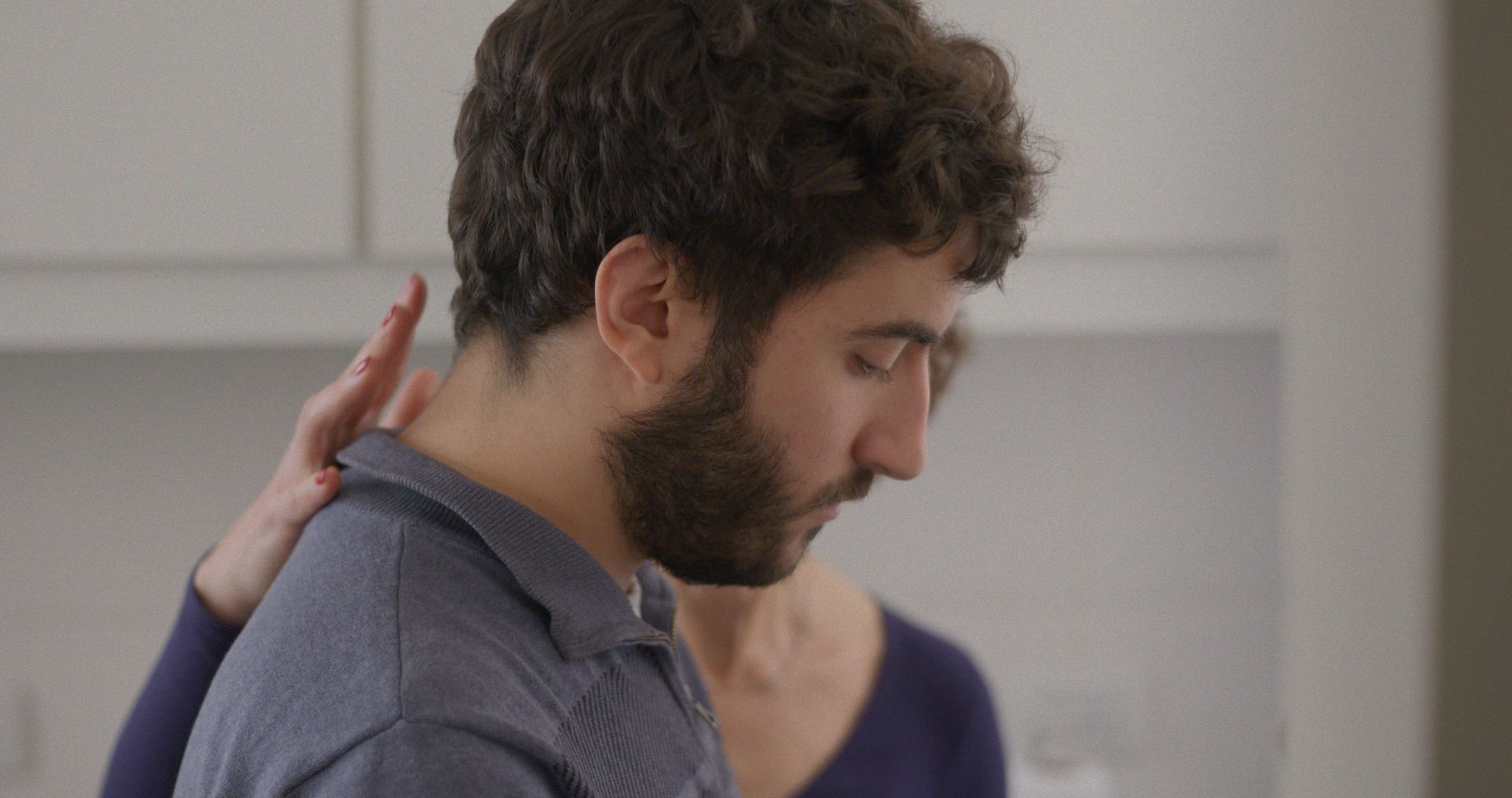
In your speech, you thanked public institutions in Argentina, such as the INCAA and the Buenos Aires Film Museum. How have these types of places contributed to your career?
Without the INCAA and the Film Law, there would be no Argentine cinema. The current government is denigrating our cultural institutions. During his political campaign, Javier Milei amused himself on TV promising to “throw away” our Film Institute. On the other hand, Milei defined anyone who advocated for public cultural policies during the campaign as a “post-Marxist” — even going so far as to use the expression “leftist shit”.
He did this while giving television space to his Vice President, who proposed that the space commemorating those detained, tortured, and disappeared persons during the dictatorship should be turned into a public recreation park. The past few months in Argentina have been an ordeal for anyone who subscribes to the consensus of the Trial of the Juntas of 1985. For me and many others, the INCAA not only allows for the production of Argentine films (which gives money to the State and does not take it away), but it also means the existence of public film schools, public film libraries, exhibition spaces and discussion spaces about culture and cinema.
The current government is denigrating our cultural institutions.
These institutions began to be thought of historically after World War II alongside the anti-fascist humanism of Italian Neorealism. The existence of institutions that welcome anyone interested in moving images allows us to continue the tradition of Memory, Truth, and Justice that we struggled so hard to agree upon. Personally, defending the public, public education and public health seems fundamental to me.

What was it like winning the Golden Bear at the Berlinale? What does this mean for you as a filmmaker?
It’s too early to tell. I’m just starting to process it.
What are you working on next? I could certainly imagine the world of An Odd Turn adapted into a feature.
I’m accumulating plenty of new cards/ideas. This time there are a lot, so maybe I’ll make a feature film soon. I don’t know.


